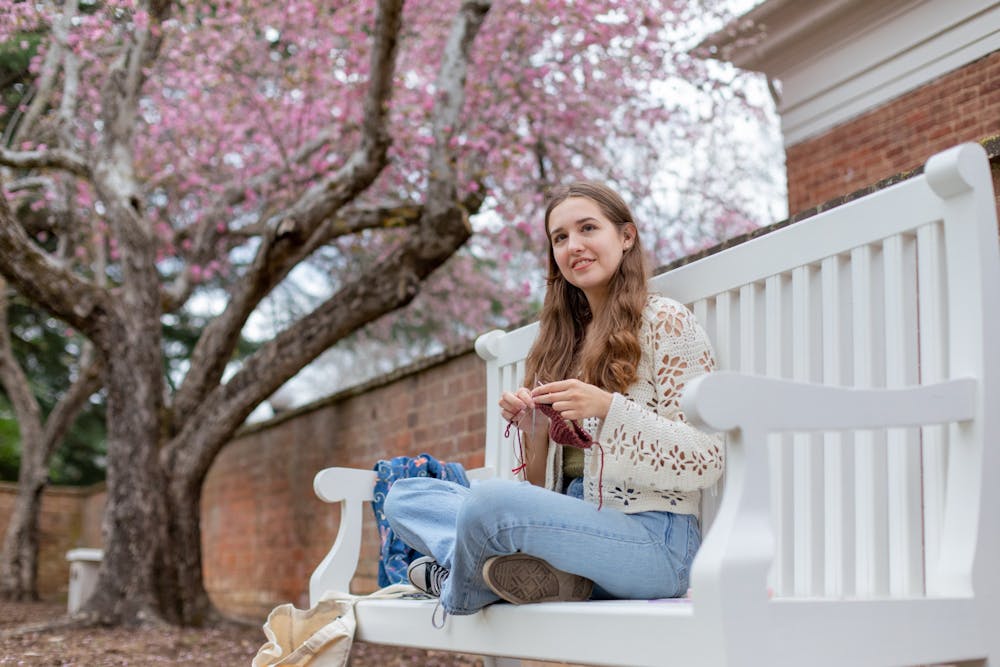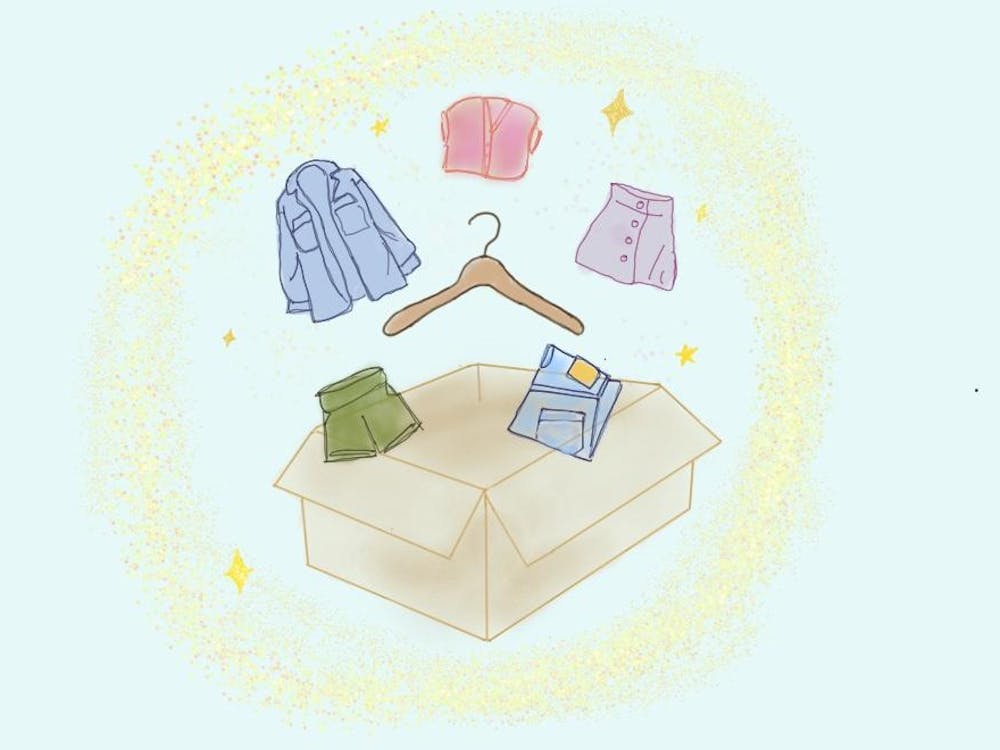Between classes, third-year College student Faith Goalder finds herself knitting in the halls of the University’s academic buildings. Knitting needles in hand, Goalder is one of the many young fiber artists working with fabric, yarn or thread as a material to advocate for sustainable fashion.
Goalder works to negate the issues of fast fashion by investing time into a budding movement referred to as slow fashion — the antithesis of fast fashion — which aims to combat the issues of overconsumption and overproduction within the fashion industry. For Goalder, this has meant learning how to knit and crochet.
“My grandmother taught me to knit during quarantine,” said Goalder, whose initial interest was to make sweaters. The crafts have been passed down in Goalder's family from generation to generation, as Goalder’s grandmother — who has been knitting for over fifty years — learned from her own mother.
Now, after fully diving into the hobby, she’s made everything from shirts to tote bags, making her uniquely familiar with the processes that go into the creation of garments as both a form of art and a practice of necessity.
“As I have gotten more into [fiber arts], I have gotten a better look at slow fashion and sustainability,” Goalder said.
Goalder said that it can take her up to a month to finish one piece, giving her insight into the true amount of labor that goes into the production of her store-bought clothes. In doing so, artists like Goalder reduce clothing waste by putting care into the quality of their garments, ensuring that each piece is meant to last.
Third-year College student Sofia Garcias is another local fiber artist engaging with the sustainability movement through her creations. Like Golader, she learned from her grandmother, and began incorporating environmentally conscious practices into her projects.
“I try not to waste too much fabric. I’m mindful of how I cut my fabric so it [will] last, and I don’t buy [materials] constantly. I use what I already have at my disposal,” Garcias said, echoing Goalder’s statements regarding the importance of mindful consumption.
The ethos of sustainability revolves around consuming mindfully and reusing products to avoid excessive production — Goalder acknowledges the difficulty in practicing sustainability in artistic disciplines based on the creation of something new.
“[Knitting’s popularity on] TikTok and social media increases that mass consumption,” Goalder said. “I feel like knitting influencers, in some ways, feel pressure to create a lot more [pieces] because they want to get [their work] out to their audience.”
As slow fashion itself becomes a trend, it can paradoxically lead to issues of overconsumption in other forms, such as in the consumption of yarn. Thus, the slow fashion movement is not without its own environmental impacts — while synthetic yarns, such as acrylic yarn, are more affordable than natural yarns, they are also composed of fibers produced with fossil fuels.
“I think that both knitting and crocheting are [sustainable] either way no matter what fiber you're making them with,” Goalder said. “They're still more Earth conscious than buying from a fast fashion company.”
In order to reduce their environmental impact, fiber artists like Goalder and Garcias reuse materials for new projects, upcycles and even simply learn how to mend existing garments.
“I'm interested in reclaiming the yarn from sweaters [I get] from a thrift store,” Goalder said. “You can take old sweaters and make them into something new.”
Garcias also advocates for conscientious choices regarding the materials she uses for her project.
“I try not to use mixed fiber fabrics because they are harder to recycle,” Garcia said. “I try to use only cotton materials.”
Goalder also said that practicality is an important aspect of maintaining sustainability in her artform. In doing so, artists are intentional with the projects they create, and they waste fewer materials.
“It’s important that [fiber artists] make garments that they continually wear or something that somebody else will be able to get use out of,” Goalder said.
Goalder is also a regular at a local knitting circle, where she meets with other community knitters involved in slow-fashion.
“It's nice to be able to get perspectives from people who aren't all U.Va. students,” Goalder said. “There are a variety of ages, and a variety of different reasons why people come to knitting and crocheting that helps me see more of the wider Charlottesville community.”
Within the University and the greater Charlottesville community alike, sustainable fiber artists are coming together in a place where art meets practicality. As the craft becomes an increasingly common form of sustainable expression, artists like Goalder and Garcias are finding new ways to engage with the modern world of fashion by synthesizing creation and conservation.







